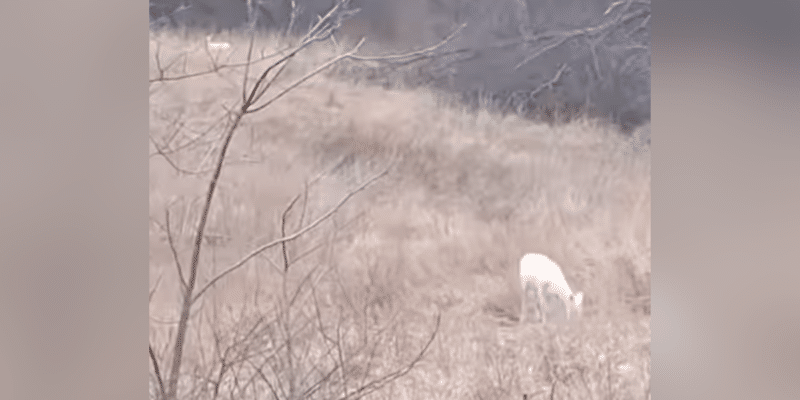Two All-White Deer Were Captured On Video By Iowa Family
Traveling through the American Heartland, one never knows what may be seen along the way. This, an Iowa family can attest to after a recent encounter with two deer which appeared to be albino.
“I didn’t know that was a thing,” Kurt Massimilla, 56, of Peosta, Iowa, can be heard saying in a video taken by his family.
Driving through Sherrill, Iowa, on March 29, the Massimilla family’s video prominently shows three deer. Of the trio, one has a more conventionally-pigmented hide and the other two appear with a vibrant white coat.
In the video, Kurt’s daughter can be heard enthusiastically looking up the statistics, exclaiming, “Albino deer are extremely rare, with an estimated occurrence of one in 30,000!”
Since then, this video has attracted great interest online.
Watch their encounter here:
View this post on Instagram
Are These Deer Albino?
While the deer in the video appear white, it’s not clear if they are, indeed, albino.
The Des Moines Register spoke with Jace Elliott, a deer biologist with the Iowa Department of National Resources, who said, “It’s difficult to say from the video whether it was two albino deer. It could be albino, but it could also be leucistic; the differences between the two pigment disorders are difficult to tell without being very close to the animal.”
More commonly referred to as a piebald deer, a leucistic deer’s white appearance derives from a genetic condition which reduces the pigmentation in the deer’s coat.
Regardless of whether these deer were piebald or albino, a sighting of a white deer — better yet, two — is still far from common.
According to the National Deer Association, albinism in deer can be observed in one out of every 30,000 deer.
On the other hand, piebald deer are still uncommon, but are observed in one out of every 1,000.
Further, life for a piebald deer may be fraught with complications, with the National Deer Association reporting, “Unfortunately for piebald deer, this rare genetic condition can sometimes include severe deformities that run deeper than hair color. This is because some of the same genes that code for coat color also code for other physical traits. Crooked legs, hooves and spine are sometimes part of the visible problems. Piebald deer may have a shortened face and a humped nose. Dwarfism can also be part of the condition.”
Have you ever seen an albino critter in the wild? We’ll be keeping our eyes peeled.

